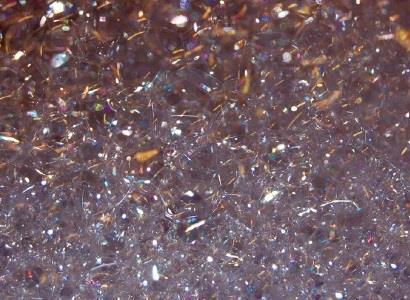Soap bubbles containing a mixture of oxygen and methane can be used to produce spectacular explosions and impressive shock-waves that will always please
Caution: You may need to obtain a special risk assessment from CLEAPPS to satisfy health and safety requirements; CLEAPPS should agree, providing the quantities involved are kept small.
Kit:
- oxygen cylinder
- methane - from gas tap
- rubber tubing
- metre rule
- wooden splints
- tape
- plastic washing up bowl
- washing up liquid
- ear defenders
- eye protection
- warm water
Procedure:
Half fill a plastic washing up bowl with hot water and then add 50ml of washing up liquid and gently mix. Connect a length of rubber tubing to a gas tap and hold the other end in the soapy water. Open the gas tap just enough to produce a slow stream of small bubbles, they should collect on the surface. Now introduce the oxygen tube next to the methane tube and release oxygen bubbles at twice the rate so the mixed gases are of the correct molar proportions 1:2. Using your hand, scoop out some the bubbles with a combined volume no greater than a tennis ball, and place on lab bench. Using a burning lit splint taped to a metre rule and held at arms length, ignite the bubbles.
Special tips:
- practise the experiment before attempting with a class, practise makes perfect with regards to mixing the gases in the correct proportions
- start with bubbles of pure methane to illustrate the slow combustion of methane in the limited supply of oxygen from the surrounding air
- if the bubbles are not exploding or just burning with a yellow flame, adjust mixture until successful
- once confident in the procedure, try igniting similar quantities of the bubbles held directly on your hand
Teaching goals

The chemistry of this demonstration can be as easy or hard as you chose. It fits in nicely when studying elements, compounds, mixtures, chemical change, word equations and rates of reaction with ages 11-14. At ages 14-16, a slightly more quantitative approach can be introduced by calculating energy changes using mean bond energies, or as an example to study energy level diagrams with the introduction of activation energy. The list is endless. At post-16, this is a great example of a thermodynamically unstable mixture of gases, which is kinetically stable due to the high activation energy barrier. More quantative studies of the thermodynamics can link theoretical predictions to experimental observations.
Methane burns completely in sufficient oxygen according to the following balanced equation:
CH4(g) + 2O2(g) → CO2(g) + 2H2O(l)
- Standard enthalpy change of reaction: ΔH0r = –890 kJmol–1, a large, negative enthalpy change is in agreement with the explosive, exothermic reaction.
- Standard entropy change of the system: ΔS0System = ΔS0Products–ΔS0Reactants = (214 + 2 x 69.9) – (186 + 2 x 205) JK–1mol–1 = –242 JK–1mol–1. The decrease in the entropy of the system is consistent with the conversion of gases to liquids.
- Standard entropy change to the surroundings: ΔS0Surroundings = –ΔH / T = +890000 Jmol–1/298K = +2987 Jmol–1K–1 – It seems logical that the observed evolution of heat will increase the entropy of the surrounding gases (air).
- Total standard entropy change of the reaction: ΔS0Total = ΔS0Surroundings + ΔS0System = (2987 – 242) = +2745 Jmol–1K–1 – The large, positive total entropy change indicates a spontaneous reaction. The negative ΔS0System is overwhelmed by the very positive ΔS0Surroundings which drives the reaction forward.
Safety
- Bubbles should not be lit from students' hands
- Ear Defenders and goggles must be worn by the person igniting the bubbles and the student assisting.
- The audience, wearing goggles, must be at least 3m away and must protect their ears by covering with their hands.
- If igniting bubbles on hands, ensure the arms are outstretched and the hands are flat. Again, safety goggles and ear defenders are essential.
- Make sure the gas tap and oxygen cylinder are turned off before igniting bubbles.
- Keep naked flames well away, at least 2m, from the bowl of bubbles and tubing used to deliver oxygen and methane. Arrange the classroom so the bubbles are produced on one side and ignited on the other.
- Do not use larger quantities of bubbles; the explosion is very loud and can damage hearing. Do NOT be tempted to use more bubbles that recommended in the above method. Make sure pupils cover their ears with their hands.
- Do not confine the bubbles in any way.









1 Reader's comment